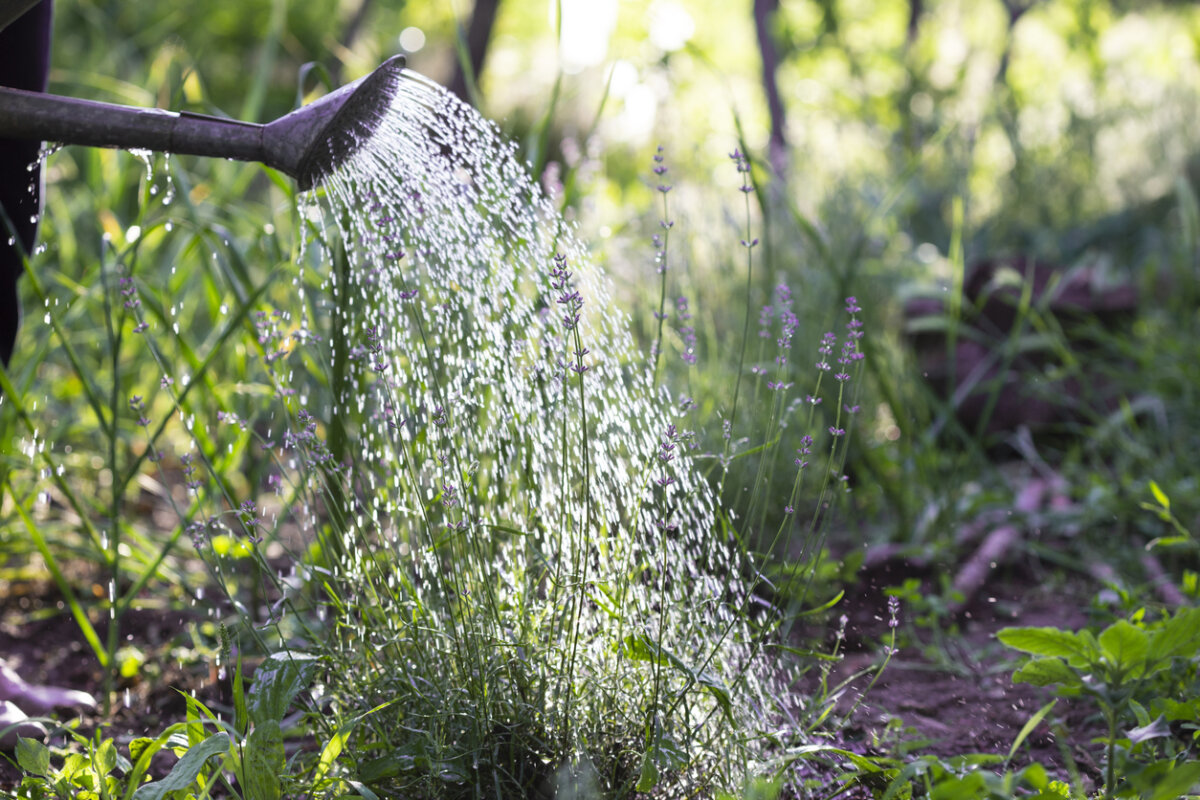
Read our tips on how to save water and keep your landscape healthy this summer.
We are likely to have a hot, dry summer this year. According to the Washington State Climatologist, “The three-month outlook for July through September (JAS) is indicating higher chances of above normal temperatures across Washington State.” The state climatologist also says “There are higher chances of below normal JAS precipitation for western and north central WA.”
Watering is an investment in a healthy landscape
What does this mean for your yard? It is really important to water your lawn and landscape during the summer. While you may want to save water, the cost of replacing trees, shrubs, perennials and lawn that don’t survive a hot summer far outweighs the cost of water.
Even if the plants survive the summer, if they are stressed, they are more vulnerable to invasion by diseases and insect pests. A thin, drought-stressed lawn may struggle against weeds and moss when the rains return.
And healthy landscapes have many benefits. In particular, trees help clean the air and reduce the impacts of climate change. Landscape plants reduce runoff, helping to keep local streams clean. Green spaces help keep us healthy and happy. And a healthy, attractive landscape adds to your home’s street appeal and resale value.
So what do you do? How do you keep your plants healthy without using too much water?
Here are tips on how to save save water while keeping your landscape healthy.
Water when it is cool
This will allow the water to soak much deeper into the soil. If you water during the heat of the day, much of the water will be wasted. According to The Climate Change Garden, “Once the thermostat begins to rise, plants will start transpiring, and some of your precious resource, and the time spent delivering it, will simply evaporate away.”
Morning is the best time to water to reduce the chance of disease. While evening watering is also good for reducing evaporation, some plants are susceptible to diseases if they stay damp overnight. If you water in the evening, don’t start too late.
Water for longer, less often
Water slowly and deeply so the water doesn’t run off but seeps deep into the soil and remains longer. Shallow watering will encourage plants to grow shallow roots and make them more susceptible to drought stress. Deep watering will encourage plants to grow deep roots, making them more resilient.
Use mulch to reduce water needs in garden beds
Thick layers of mulch greatly reduce the amount you will need to water. When you apply mulch, pay special attention to plants that need more water, since they are most vulnerable to drought stress. Mulch will help retain the soil retain water, and it will shade soil from the hot sun. If your beds are already dry, water deeply before you add a layer of mulch.
Water only where it is needed
Make sure you aren’t watering your driveway, sidewalk or patio. Change the path or direction of your sprinklers or irrigation system
Find out how much water you are using
Soil probe
It is worth investing in a soil probe. (You can also use a screwdriver or other tool that you can push into the soil.) A soil probe allows you to measure how deeply the water has penetrated. This will let you know whether you are reaching deep enough into the root zone to encourage the lawn to grow deep roots. Watering deeply is key to healthy plants.
Watch our short video “Watering 101: Create Strong and Healthy Plants.” It explains how and why to water deeply. Start at 1:08 for instructions on how to use a soil probe.
One inch of water
You want to slowly water your lawn one to two inches per week through the summer, depending on site, soil and rainfall. Saturating the soil encourages the grass to grow deeper roots, making it less susceptible to drought stress.
Find out how much water your sprinkler is putting out, so you know if your lawn is getting enough or too much water, and how evenly you are watering. Watch our video on how to measure one inch of water.
Use a water timer
A water timer will help you water your plants long enough for the water to penetrate, but not so long that you waste water. Watch our short video on water timers.
Use the right watering tools
Water wands, soaker hoses and oscillating sprinklers can all help you do a more effective job watering. Watch our short video on watering tools.
Watch our entire playlist
Find out more on how to save water and water more efficiently. Check out our entire YouTube playlist on Watering your lawn and garden.
